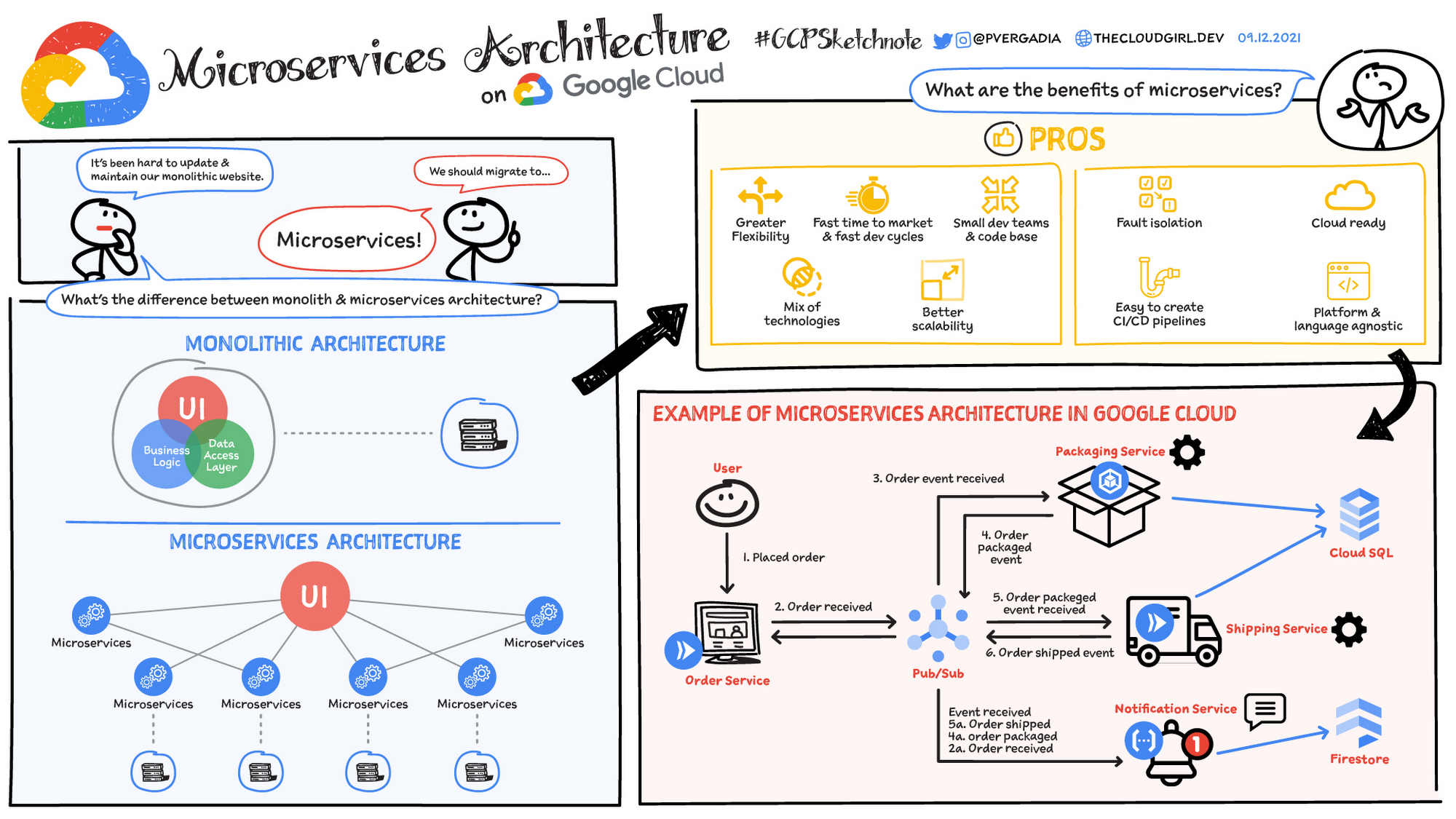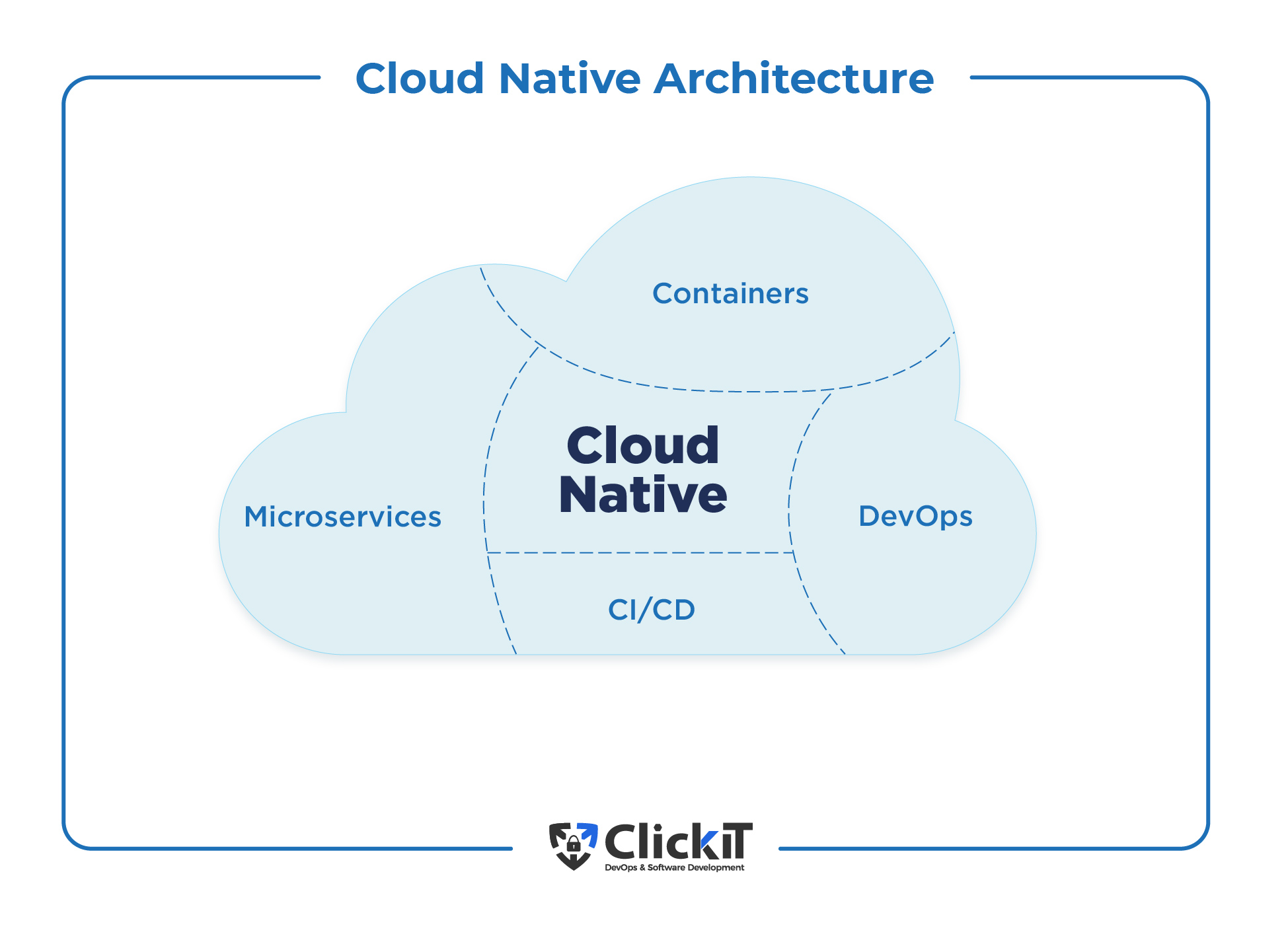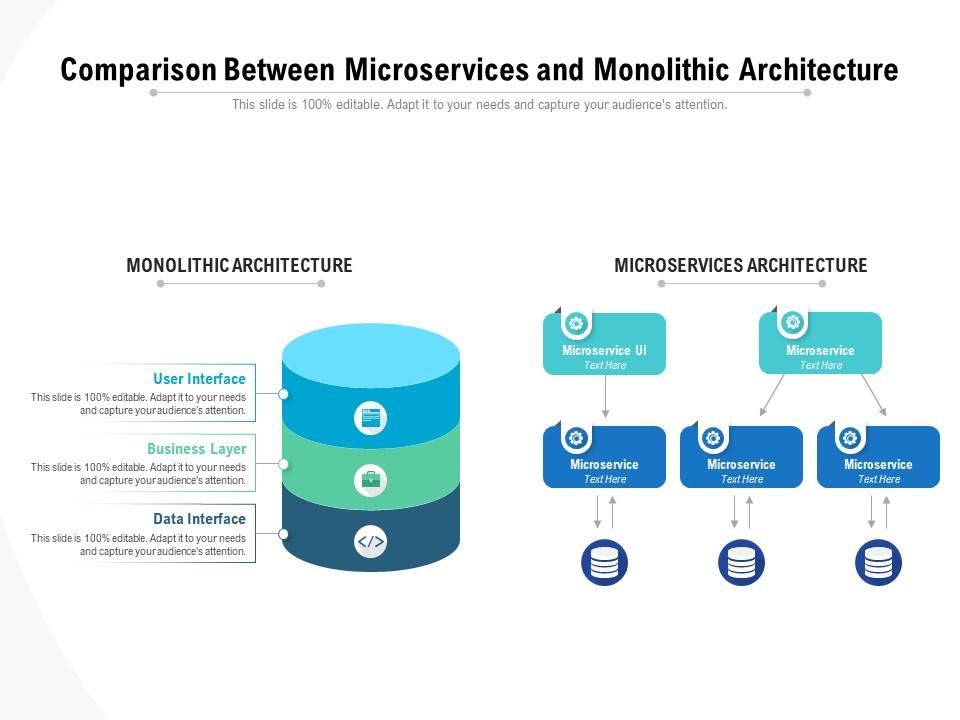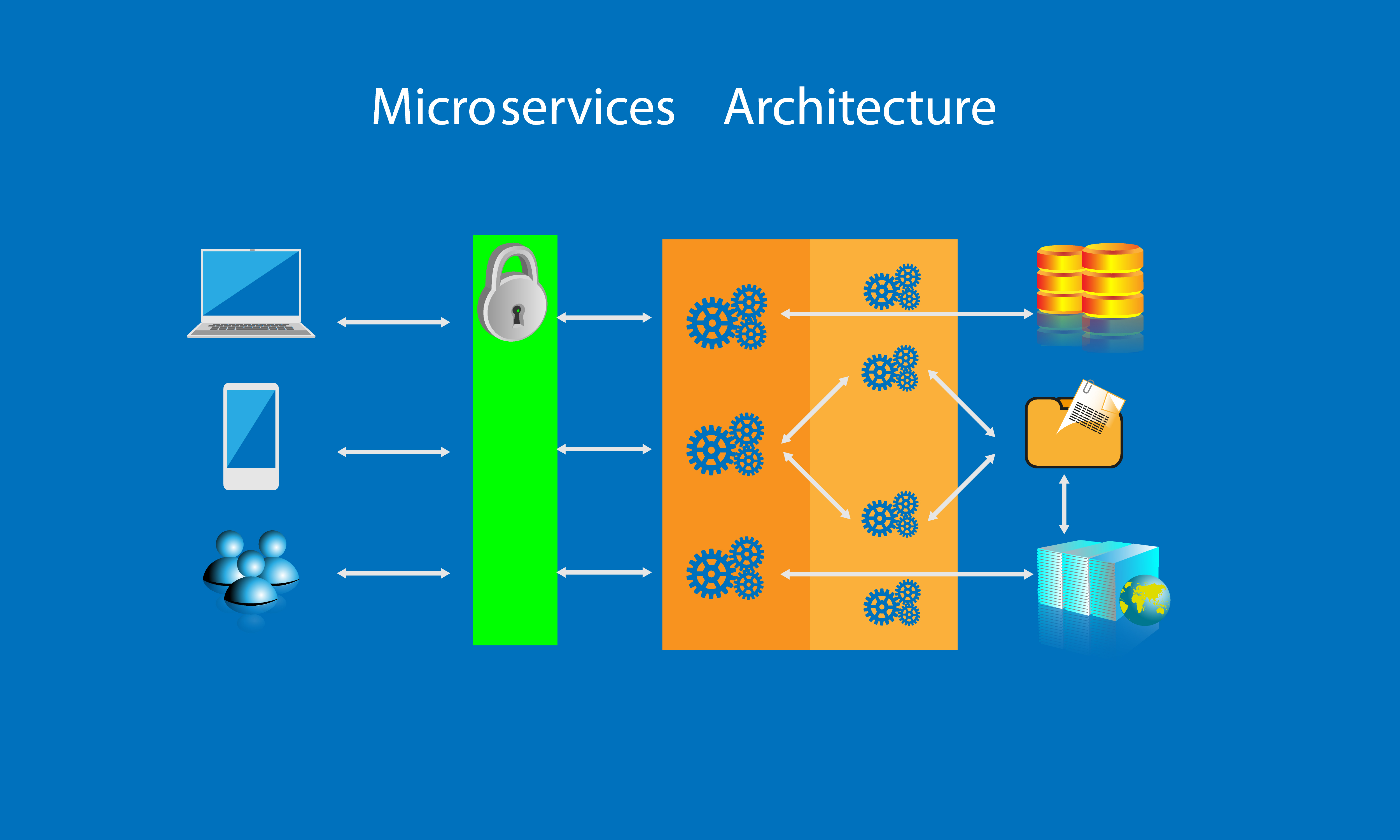What are Microservices and Cloud-Native Applications?
Microservices architecture in cloud-native applications is a modern approach to building and deploying software applications. This approach involves breaking down large, monolithic applications into smaller, independent components called microservices. Each microservice handles specific business capabilities and communicates with other microservices through well-defined APIs. This design enables development teams to work on individual microservices independently, improving productivity and reducing time-to-market.
Cloud-native applications, on the other hand, are designed to leverage the unique benefits of cloud computing environments. These applications are built using containerization technologies, such as Docker, and managed using orchestration tools like Kubernetes. By combining microservices architecture with cloud-native principles, development teams can create applications that are highly scalable, resilient, and agile.
The combination of microservices architecture and cloud-native applications offers numerous advantages. For instance, it allows for the independent scaling of services, ensuring that resources are allocated efficiently and reducing costs. Additionally, it enhances fault tolerance by isolating failures to individual microservices, minimizing the impact on the overall system. Furthermore, microservices architecture in cloud-native applications facilitates continuous integration and delivery, enabling organizations to quickly adapt to changing business requirements and market conditions.

The Role of Microservices Architecture in Cloud-Native Development
Microservices architecture plays a crucial role in cloud-native application development, enabling independent development, deployment, and scaling of services. This approach allows development teams to build and maintain applications using smaller, more manageable components, which can be developed and deployed rapidly and independently.
In cloud-native environments, microservices are often containerized using technologies such as Docker. Containerization enables the consistent deployment of applications across different computing environments, ensuring that applications run smoothly and reliably, regardless of the underlying infrastructure. Additionally, containerized microservices can be easily managed using orchestration tools like Kubernetes, which automate the deployment, scaling, and management of containerized applications.
The use of microservices architecture in cloud-native applications offers numerous benefits. For instance, it enables organizations to build applications using the latest technologies and frameworks, without being locked into a single technology stack. This approach also allows for the independent scaling of services, ensuring that resources are allocated efficiently and reducing costs. Furthermore, microservices architecture enhances fault tolerance by isolating failures to individual services, minimizing the impact on the overall system.
However, implementing microservices architecture in cloud-native applications also presents several challenges. For instance, managing and coordinating multiple microservices can be complex, requiring sophisticated monitoring and orchestration tools. Additionally, data management can be challenging in microservices-based systems, as each service may have its own database, leading to potential data inconsistencies and synchronization issues. To address these challenges, development teams must adopt best practices for designing, testing, and deploying microservices in cloud-native environments.

How to Implement Microservices Architecture in Cloud-Native Applications
Implementing microservices architecture in cloud-native applications can be a complex process, but it offers numerous benefits, such as improved scalability, resilience, and agility. To successfully implement microservices architecture, development teams should follow a structured approach, covering service design, communication, data management, and monitoring. In this article, we will provide a step-by-step guide on implementing microservices architecture in cloud-native applications.
Step 1: Service Design
The first step in implementing microservices architecture is to design the individual services that will make up the application. Each service should be designed to perform a specific function, and services should be decoupled from one another to ensure that changes to one service do not impact others. When designing services, it is essential to consider the following:
- Service boundaries: Clearly define the responsibilities and boundaries of each service.
- Service granularity: Determine the appropriate level of granularity for each service, ensuring that services are neither too fine-grained nor too coarse-grained.
- Service interfaces: Define the interfaces that will be used to communicate between services.
Step 2: Communication
Once the services have been designed, the next step is to establish how they will communicate with one another. There are several communication patterns that can be used in microservices architecture, including:
- Synchronous communication: Services communicate with one another in real-time, using request-response messaging.
- Asynchronous communication: Services communicate with one another using message queues or event-driven architectures.
- RESTful communication: Services communicate with one another using RESTful APIs.
When establishing communication patterns, it is essential to consider the following:
- Performance: Synchronous communication can be slower than asynchronous communication, but it offers greater control over the flow of data.
- Scalability: Asynchronous communication can be more scalable than synchronous communication, as it allows services to communicate independently of one another.
- Complexity: RESTful communication is generally simpler than synchronous or asynchronous communication, but it may not be suitable for all use cases.
Step 3: Data Management
Data management is a critical aspect of implementing microservices architecture. Each service should have its own database, ensuring that data is decoupled from the application logic. When managing data, it is essential to consider the following:
- Data consistency: Implement strategies to ensure data consistency across services, such as eventual consistency or two-phase commit.
- Data security: Implement security measures to protect sensitive data, such as encryption and access controls.
- Data governance: Implement data governance policies to ensure that data is managed effectively and efficiently.
Step 4: Monitoring
Monitoring is essential in microservices architecture, as it allows development teams to identify and address issues quickly. When monitoring microservices, it is essential to consider the following:
- Logging: Implement logging mechanisms to capture information about service behavior and errors.
- Tracing: Implement tracing mechanisms to track requests as they pass between services.
- Alerting: Implement alerting mechanisms to notify development teams of issues in real-time.
Implementing microservices architecture in cloud-native applications can be challenging, but it offers numerous benefits. By following a structured approach, development teams can ensure that services are designed, communicated, managed, and monitored effectively, leading to improved scalability, resilience, and agility. However, there are also potential challenges to consider, such as increased complexity, distributed transaction management, and data consistency.
Real-World Examples of Microservices Architecture in Cloud-Native Applications
Microservices architecture has gained significant traction in modern software development, particularly in cloud-native applications. Many successful companies have adopted this approach, including Netflix, Amazon, and Uber. In this article, we will explore how these companies leverage the benefits of microservices and cloud-native technologies.
Netflix
Netflix is a pioneer in microservices architecture, having migrated from a monolithic architecture to a microservices-based system in 2009. The company’s microservices architecture, known as the “Netflix OSS Stack,” consists of over 700 microservices that handle various aspects of the platform, such as video streaming, user management, and billing. By adopting microservices, Netflix has achieved improved scalability, resilience, and agility, enabling the company to handle millions of concurrent users and rapidly deploy new features.
Amazon
Amazon is another company that has successfully implemented microservices architecture in its cloud-native applications. The company’s e-commerce platform consists of over 150 microservices that handle various aspects of the platform, such as product catalog, order management, and payment processing. By adopting microservices, Amazon has achieved improved scalability, resilience, and agility, enabling the company to handle millions of transactions per second and rapidly deploy new features.
Uber
Uber is a ride-hailing company that has successfully implemented microservices architecture in its cloud-native applications. The company’s platform consists of over 3,000 microservices that handle various aspects of the platform, such as ride-hailing, payment processing, and mapping. By adopting microservices, Uber has achieved improved scalability, resilience, and agility, enabling the company to handle millions of requests per second and rapidly deploy new features.
These real-world examples demonstrate the benefits of microservices architecture in cloud-native applications. By adopting this approach, companies can achieve improved scalability, resilience, and agility, enabling them to handle large volumes of traffic and rapidly deploy new features. However, it is essential to note that implementing microservices architecture is not without its challenges, such as increased complexity, distributed transaction management, and data consistency.
To successfully implement microservices architecture in cloud-native applications, development teams should follow best practices, such as designing services with clear boundaries, implementing effective communication patterns, managing data effectively, and monitoring system behavior. By following these best practices, development teams can ensure that their microservices-based systems are scalable, resilient, and agile, enabling them to meet the demands of modern software development.
Comparing Microservices Architecture to Monolithic Architecture
Microservices architecture and monolithic architecture are two approaches to building cloud-native applications. While microservices architecture involves breaking down an application into smaller, independent services, monolithic architecture involves building a single, self-contained application. In this article, we will compare microservices architecture to monolithic architecture, highlighting the advantages and disadvantages of both approaches.
Advantages of Microservices Architecture
Microservices architecture offers several advantages over monolithic architecture, including:
- Scalability: Microservices architecture enables independent scaling of services, allowing development teams to allocate resources more efficiently and cost-effectively.
- Resilience: Microservices architecture provides improved fault tolerance, as the failure of one service does not necessarily impact the entire system.
- Agility: Microservices architecture enables independent development and deployment of services, allowing development teams to release new features more quickly and frequently.
Disadvantages of Microservices Architecture
However, microservices architecture also has some disadvantages, including:
- Complexity: Microservices architecture is more complex than monolithic architecture, requiring more sophisticated development, testing, and deployment processes.
- Distributed Transaction Management: Microservices architecture requires effective management of distributed transactions, which can be challenging to implement and maintain.
- Data Consistency: Microservices architecture can lead to issues with data consistency, as services may have different views of the same data.
Advantages of Monolithic Architecture
Monolithic architecture also has some advantages, including:
- Simplicity: Monolithic architecture is simpler than microservices architecture, requiring less sophisticated development, testing, and deployment processes.
- Performance: Monolithic architecture can provide better performance than microservices architecture, as all components are running in the same process.
- Ease of Debugging: Monolithic architecture is easier to debug than microservices architecture, as all components are running in the same process.
Disadvantages of Monolithic Architecture
However, monolithic architecture also has some disadvantages, including:
- Scalability: Monolithic architecture is less scalable than microservices architecture, as scaling requires scaling the entire application, rather than individual services.
- Resilience: Monolithic architecture provides less fault tolerance than microservices architecture, as the failure of one component can impact the entire system.
- Agility: Monolithic architecture is less agile than microservices architecture, as it requires longer development and deployment cycles for new features.
In conclusion, microservices architecture and monolithic architecture are two approaches to building cloud-native applications, each with its advantages and disadvantages. While microservices architecture offers improved scalability, resilience, and agility, it also introduces complexity, distributed transaction management, and data consistency challenges. On the other hand, monolithic architecture provides simplicity, performance, and ease of debugging, but it is less scalable, resilient, and agile. When deciding between microservices architecture and monolithic architecture, development teams should consider the specific use cases and project requirements of their cloud-native applications.

Microservices Architecture Patterns and Best Practices
Microservices architecture is a popular approach to building cloud-native applications, offering improved scalability, resilience, and agility. However, designing and implementing microservices architecture can be challenging, as it requires careful consideration of service design, communication, data management, and monitoring. In this article, we will explore common microservices architecture patterns and best practices for designing, testing, and deploying microservices in cloud-native environments.
API Gateway Pattern
The API Gateway pattern is a common microservices architecture pattern that simplifies communication between clients and services. In this pattern, a single entry point, or API Gateway, is used to route requests to the appropriate service. The API Gateway can also perform tasks such as authentication, rate limiting, and caching, reducing the burden on individual services.
Circuit Breaker Pattern
The Circuit Breaker pattern is a microservices architecture pattern that improves system resilience by preventing cascading failures. In this pattern, a proxy or circuit breaker is placed between the client and service, monitoring the health of the service. If the service becomes unavailable, the circuit breaker trips, preventing further requests from being sent to the service until it recovers.
Command Query Responsibility Segregation (CQRS) Pattern
The Command Query Responsibility Segregation (CQRS) pattern is a microservices architecture pattern that separates the responsibilities of reading and writing data. In this pattern, separate services are used for handling commands (write operations) and queries (read operations), improving system performance and scalability.
Best Practices for Designing Microservices
When designing microservices, it is important to follow best practices such as:
- Defining clear boundaries and responsibilities for each service.
- Using standardized protocols and interfaces for communication between services.
- Implementing effective error handling and fault tolerance mechanisms.
- Designing services to be stateless and horizontally scalable.
Best Practices for Testing Microservices
When testing microservices, it is important to follow best practices such as:
- Testing services in isolation, as well as in combination with other services.
- Using automated testing tools and frameworks to improve test coverage and efficiency.
- Implementing continuous integration and delivery (CI/CD) pipelines to automate testing and deployment.
Best Practices for Deploying Microservices
When deploying microservices, it is important to follow best practices such as:
- Using containers and orchestration tools like Docker and Kubernetes to automate deployment and scaling.
- Implementing effective monitoring and logging mechanisms to detect and troubleshoot issues.
- Implementing blue/green or canary deployment strategies to minimize downtime and risk.
In conclusion, microservices architecture offers many benefits for cloud-native applications, but it also requires careful consideration of service design, communication, data management, and monitoring. By following common microservices architecture patterns and best practices, development teams can design, test, and deploy microservices more effectively, improving system scalability, resilience, and agility.

Monitoring and Troubleshooting Microservices Architecture in Cloud-Native Applications
Microservices architecture in cloud-native applications offers many benefits, including improved scalability, resilience, and agility. However, monitoring and troubleshooting microservices-based systems can be challenging due to their distributed and dynamic nature. In this article, we will discuss tools and strategies for maintaining system health and performance, focusing on logging, tracing, and alerting.
Logging
Logging is a fundamental monitoring technique for microservices-based systems. Each service should generate logs that include relevant information such as request and response data, timestamps, and error messages. Logs should be centralized and easily searchable, allowing developers to quickly identify and diagnose issues. Tools such as ELK Stack (Elasticsearch, Logstash, Kibana) and Graylog can be used for centralized logging in cloud-native environments.
Tracing
Tracing is a technique for monitoring the flow of requests through a distributed system. By adding trace headers to requests, developers can track the path of a request through multiple services, identifying performance bottlenecks and errors. Tools such as Jaeger and Zipkin can be used for distributed tracing in cloud-native environments.
Alerting
Alerting is a technique for proactively notifying developers of issues in a microservices-based system. Alerts should be based on specific conditions, such as response time degradation or error rate increases. Alerting tools such as Prometheus and Nagios can be integrated with monitoring tools to provide real-time notifications.
Best Practices for Monitoring and Troubleshooting Microservices
When monitoring and troubleshooting microservices-based systems, it is important to follow best practices such as:
- Implementing centralized logging, tracing, and alerting for all services.
- Setting up automated monitoring and alerting for critical conditions.
- Regularly reviewing logs, traces, and alerts to identify and diagnose issues.
- Implementing effective communication and collaboration mechanisms between development and operations teams.
In conclusion, monitoring and troubleshooting microservices architecture in cloud-native applications can be challenging, but tools and strategies such as logging, tracing, and alerting can help maintain system health and performance. By following best practices and implementing effective monitoring and troubleshooting mechanisms, development teams can ensure the reliability and resilience of their microservices-based systems.

The Future of Microservices Architecture in Cloud-Native Applications
Microservices architecture in cloud-native applications has revolutionized modern software development, enabling scalability, resilience, and agility. As we look to the future, emerging trends and technologies such as serverless computing, artificial intelligence, and machine learning have the potential to further enhance microservices-based systems.
Serverless Computing
Serverless computing is an emerging trend in cloud computing that enables developers to build and run applications without having to manage servers. By integrating serverless computing with microservices architecture, developers can create highly scalable and cost-effective systems that automatically adjust to changing workloads. Serverless computing platforms such as AWS Lambda, Azure Functions, and Google Cloud Functions can be used to deploy microservices in a serverless environment.
Artificial Intelligence and Machine Learning
Artificial intelligence (AI) and machine learning (ML) are becoming increasingly important in modern software development. By integrating AI and ML with microservices architecture, developers can create intelligent and adaptive systems that can learn from data and make decisions based on that learning. AI and ML can be used to improve system performance, optimize resource utilization, and enhance user experiences.
Best Practices for the Future of Microservices Architecture
As microservices architecture continues to evolve, it is important to follow best practices for designing, testing, and deploying microservices in cloud-native environments. These best practices include:
- Implementing effective communication and collaboration mechanisms between development and operations teams.
- Implementing automated testing and deployment mechanisms for microservices.
- Implementing effective monitoring and troubleshooting mechanisms for microservices-based systems.
- Implementing security best practices for microservices, such as encryption, authentication, and authorization.
In conclusion, the future of microservices architecture in cloud-native applications is promising, with emerging trends and technologies such as serverless computing, artificial intelligence, and machine learning having the potential to further enhance microservices-based systems. By following best practices for designing, testing, and deploying microservices in cloud-native environments, development teams can ensure the reliability and resilience of their microservices-based systems, now and in the future.
